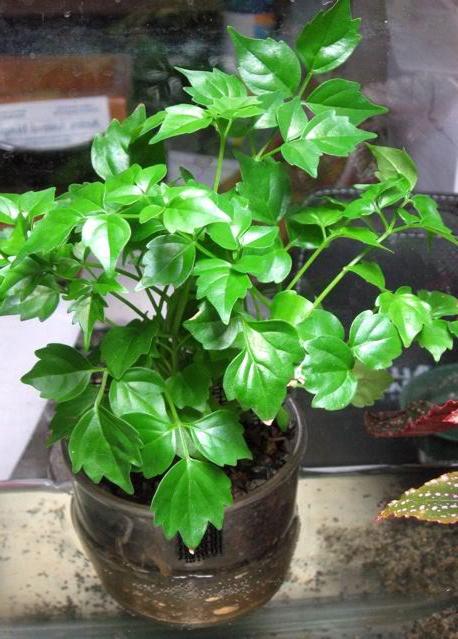
Radermacher is an evergreen plant that looks like a sprawling tree or shrub that can reach 1.5 m in room conditions. It belongs to the Bignoniaceae family, and is found in the natural environment in Southeast Asia. You can understand that it’s just the radermacher, according to its openwork opposite, three-ply leaves of an elongated-oval shape, slightly wavy and serrated at the edges. As a rule, foliage has a saturated green color and a glossy surface. The trunk of the plant is erect, with a tendency to "exposure". At home, the radermacher does not bloom, but in the wild it has racemose inflorescences of a white, bell-shaped hue. This wonderful plant was introduced to Europe relatively recently - in the early 80s of the 20th century, but has already gained great popularity among many flower growers due to the fact that it is quite unpretentious in cultivation. In this article we would like to talk about the peculiarities of the growth of the indoor tree of the radermacher, the care at home for which consists in simple agricultural operations. Creating normal conditions of "living", watering and timely fertilizing the plant, you will get a beautiful decorative tree that can decorate any room with its bright patterned leaves.
Radermacher: home care. Lighting, temperature, humidity
This houseplant loves light, so it is recommended to place it on the windowsill or on the floor near the western, eastern or, in extreme cases, southern windows. Soft diffused sunlight is what is needed for active growth of deciduous mass. However, the plant must be protected from direct sunlight to prevent burns. For shading, you can use curtains or blinds. Radermacher loves fresh air, so in the warmer months, a pot with a tree can be taken out onto a balcony or loggia. In the autumn-winter period, when ventilating the room, the plant should be protected from cold air - it does not tolerate drafts. As for the temperature regime, it is recommended to be moderate, approximately +21 ... + 24 ° C in the summer, and not lower than +15 ° C in the winter. The flower of a radermacher is also undemanding to high humidity. Caring for him in this regard is uncomplicated and not burdensome. However, it is still advisable to regularly spray the plant with a spray bottle and wipe the leaves from dust with a clean, damp cloth.

Radermacher. Home care: watering and pruning
This decorative tree prefers uniform and regular watering throughout the year, does not tolerate overdrying and waterlogging. Excessive watering contributes to the falling of leaves, and if they have already begun to grow brown and fade, it is impossible to stop this process. Between humidifications, the substrate in the pot should not dry out much. For plants, it is advisable to use clean, soft water at room temperature. As for pruning, this procedure is performed in the spring to give the crown an attractive shape. It is also advisable to periodically pinch off too long shoots to enhance branching. Experienced growers are advised to feed the radermacher every two weeks, from April to August. To do this, you can use universal fertilizer for indoor plants.
The Chinese beauty is a radermacher. Home care: transplant
Transshipment of this decorative plant in a new pot is produced annually in the spring. At the same time, a new container is selected two sizes larger than the old one. It prefers a mixture of turf, peat, leafy soil, humus and a small amount of sand (1: 1: 2: 1) of the radermacher. Care (photo shows this) allows you to have a healthy and beautiful plant in a pot.
Propagate the indoor tree using seeds or cuttings. At home, the most convenient and effective method of cuttings. The cut biomaterial is rooted in a moist, fertile substrate. Cuttings are deepened into the soil to the first leaf and covered with polyethylene or glass. At the same time, the room temperature is maintained within +24 ° C. After rooting, the seedlings are placed in separate containers, and after 2-3 weeks, the tops are pinched.